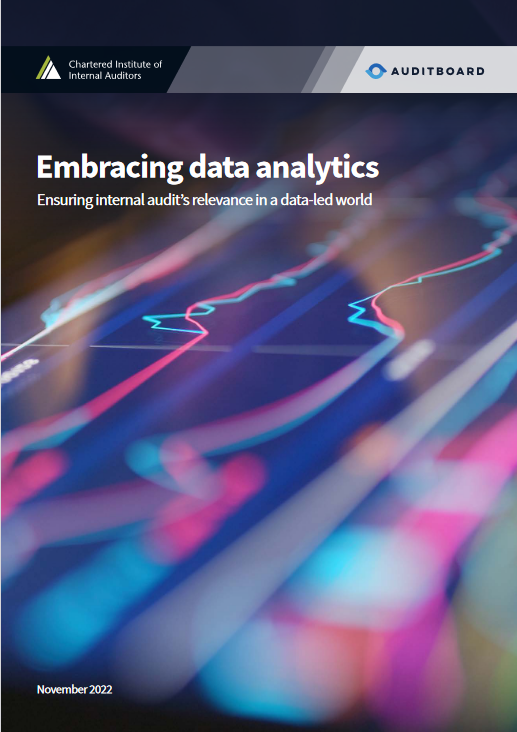 Data is vital to making risk-aware decisions in today’s volatile environment. Without a clear understanding of how their organization is handling systemic risk — supported by accurate data — stakeholders may be met with unanticipated poor business outcomes.
Data is vital to making risk-aware decisions in today’s volatile environment. Without a clear understanding of how their organization is handling systemic risk — supported by accurate data — stakeholders may be met with unanticipated poor business outcomes.
According to a CIIA survey of internal audit functions, more than two-thirds of respondents are using some form of data analytics, but nearly one-third are not using any at all — and of those using data analytics, many are still in the early stages. Of those applying analytics, 69% are doing so on a planned but transactional basis and only 3% report being at the furthest end of the maturity curve with fully optimized analytics adoption.
By not developing its data fluency and analytics capabilities, internal audit faces a potential credibility crisis. Digitalization was accelerated by the pandemic. Internal audit must accept this reality by viewing the organization, its activities, and risk controls through a data lens, and integrating data analytics to enhance its service delivery. Failure to do so will mean internal audit is in danger of losing relevance.
A joint report from the CIIA and AuditBoard, Embracing Data Analytics: Ensuring Internal Audit’s Relevance in a Data-Led World, examines the current state of data analytics in internal audit and identifies areas of opportunity as well as challenges to progress.
Download the full report to learn:
- How your data analytics maturity level compares to peer organizations.
- The biggest benefits of implementing (or maturing) audit analytics.
- Key considerations for developing your audit analytics strategy and upskilling the function.
